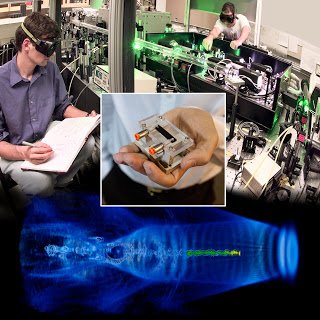

| Visitors Now: | |
| Total Visits: | |
| Total Stories: |

| Story Views | |
| Now: | |
| Last Hour: | |
| Last 24 Hours: | |
| Total: | |
State-of-the-Art Electron Beams From Table-Top Accelerators
From
The rapidly evolving technology of laser plasma accelerators (LPAs) – called “table-top accelerators” because their length can be measured in centimeters instead of kilometers – promises a new breed of machines, far less expensive and with far less impact on the land and the environment than today’s conventional accelerators.
Future LPAs offer not only compact high-energy colliders for fundamental physics but diminutive light sources as well. These will probe chemical reactions, from artificial photosynthesis to “green catalysis”; unique biological structures, inaccessible to other forms of microscopy yet essential to understanding life and health; and new materials, including low-temperature superconductors, topological insulators, spintronics devices, and graphene nanostructures, which will revolutionize the electronics industry. With intensely bright beams spanning the spectrum from microwaves to gamma rays, table-top accelerators will open new vistas of science.
LOASIS has produced well-formed electron beams of up to a billion electron volts in laser plasma accelerators just 3.3 centimeters long. A typical laser set-up is shown above, with the billion-electron-volt accelerating module in the inset. Below, a laser wakefield accelerates a pulse of electrons (bright yellow and green) in this simulation by Cameron Geddes. (Photos Roy Kaltschmidt, Lawrence Berkeley National Laboratory)
See more and subscribe to NextBigFuture at 2012-10-23 01:24:08 Source: http://nextbigfuture.com/2012/10/state-of-art-electron-beams-from-table.html
Source:



